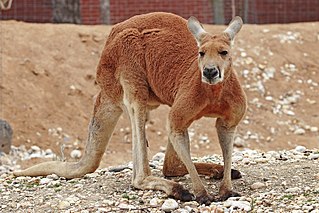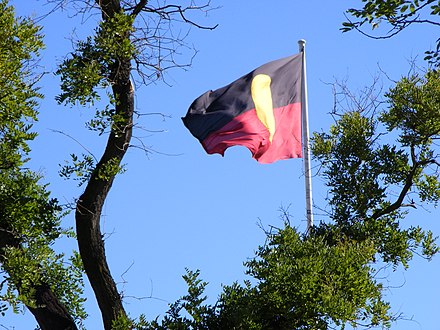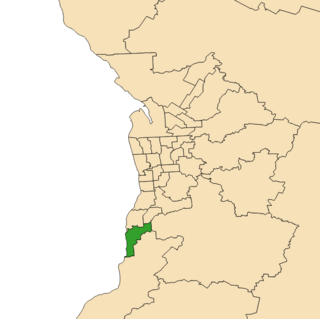
It has been suggested that this article be merged into Victoria Square, Adelaide . (Discuss) Proposed since April 2019. |
This article needs additional citations for verification .(April 2019) (Learn how and when to remove this template message) |
Tarndanyangga ( 34°55′50″S138°36′15″E / 34.93056°S 138.60417°E ) (Kaurna pronunciation: [ˈd̪̥aɳɖaɲaŋɡa] [1] ) is the Kaurna word for red kangaroo dreaming or red kangaroo rock, used by the Kaurna people, who inhabited the whole Adelaide Plains area before European settlement, to refer to the Adelaide city and parklands area. [2]
Kaurna is a Pama-Nyungan language historically spoken by the Kaurna peoples of the Adelaide Plains of South Australia. The people of the Adelaide plains are known as the Kaurna people in contemporary times, but the Kaurna nation is made up of various tribal clan groups, each with their own parnkarra district of land, each having had their own dialectal form of language. These dialects were historically spoken in the area of the Adelaide Plains bounded by Crystal Brook and Clare in the north, Cape Jervis in the south, and just over the Mount Lofty ranges. It ceased to be spoken on an everyday basis in the 19th century, but, in a process that began in the 1990s, is being reclaimed and re-introduced.

The Adelaide Plains is a plain in South Australia lying between the coast on the west and the Mount Lofty Ranges on the east. The southernmost tip of the plain is in the southern seaside suburbs of Adelaide around Brighton at the foot of the O'Halloran Hill escarpment with the south Hummocks Range and Wakefield River roughly approximating the northern boundary.

The Adelaide Park Lands are the figure-eight of land spanning both banks of the River Torrens between Hackney and Thebarton and separating the City of Adelaide from the surrounding suburbia of greater Metropolitan Adelaide, the capital city of South Australia. They were laid out by Colonel William Light in his design for the city, and originally consisted of 2,300 acres (930 ha) "exclusive of 32 acres (13 ha) for a public cemetery". One copy of Light's plan shows areas for a cemetery and a Post and Telegraph Store on West Tce, a small Government Domain and Barracks on the central part of North Tce, a hospital on East Tce, a Botanical Garden on the River Torrens west of North Adelaide, and a school and a storehouse southwest of North Adelaide.
Contents
It has also been used since 2001 as half of the official name of the central city square of the city of Adelaide named Victoria Square in 1837 after the then Princess Victoria.

Victoria Square, also known as Tarntanyangga or Tarndanyangga, is a public square in the South Australian capital of Adelaide. The area was named "Victoria Square" by the Street Naming Committee on 23 May 1837, after Princess Victoria, then heir presumptive of the British throne. The Kaurna people know the whole Adelaide city and parklands area as Tarndanyangga, "The Dreaming Place of the Red Kangaroo", and in line with the Adelaide City Council's recognition of Kaurna country, the square has been officially referred to as Victoria Square/Tarndanyangga since 2001.

Victoria was Queen of the United Kingdom of Great Britain and Ireland from 20 June 1837 until her death. On 1 May 1876, she adopted the additional title of Empress of India. Known as the Victorian era, her reign of 63 years and seven months was longer than that of any of her predecessors. It was a period of industrial, cultural, political, scientific, and military change within the United Kingdom, and was marked by a great expansion of the British Empire.















